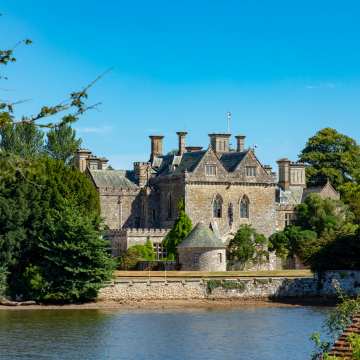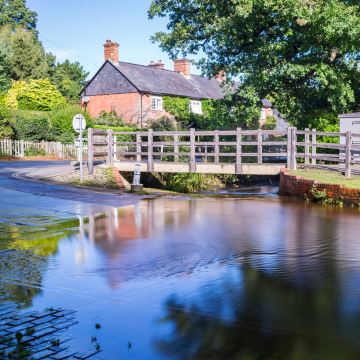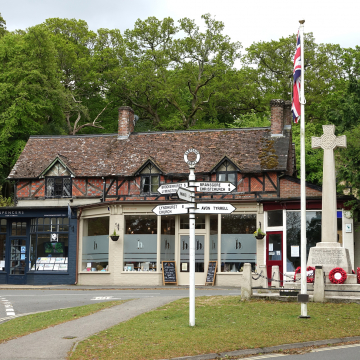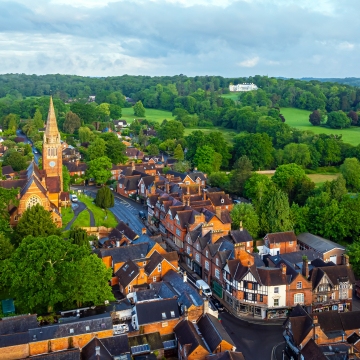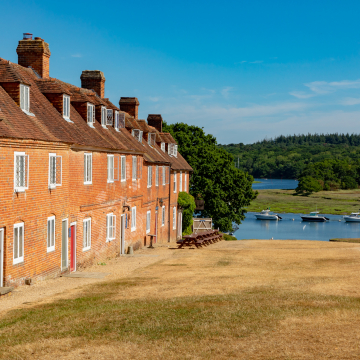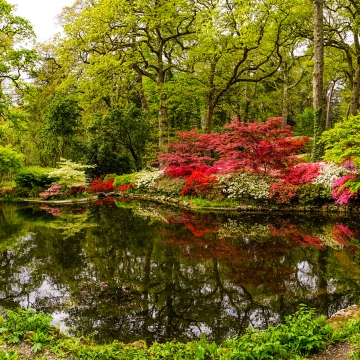The Best of The New Forest | Recommended Places to Stay & Visit
The New Forest is a unique area, known for its rich history, picturesque landscapes, and diverse wildlife. It stretches over 566 square kilometres and has been a designated National Park since 2005. The New Forest offers a blend of ancient woodlands, heathlands, wetlands, and grasslands.
Recommended New Forest Accommodation: Hotels Bed & Breakfasts Pub Accommodation
A Brief History of the New Forest
The New Forest’s origins date back nearly a thousand years. It was created by William the Conqueror in 1079 as a royal hunting ground. The name "New Forest" can be a bit misleading because, even at the time of its establishment, the forest wasn't newly planted. Instead, it was a large area of ancient woodlands, open heathlands, and grasslands that William declared as a "Nova Foresta" to protect the hunting of deer and boar.
Under Norman rule, the Forest Law was introduced, which imposed harsh restrictions on local people. These laws ensured the king and his nobles had exclusive rights to hunt deer, leaving the local communities to adapt to stricter rules on land use and access to resources. However, the inhabitants of the area—known as Commoners—were granted rights, such as pasturing animals on common land, gathering firewood, and using land for agriculture. These rights still exist today, helping to maintain the traditional way of life in the New Forest.
Perhaps one of the most notable historic incidents tied to the New Forest is the death of King William II, known as William Rufus, in 1100. While hunting, he was struck by an arrow under suspicious circumstances and died in the forest. The site of his death is marked by the Rufus Stone, a well-known historic landmark in the forest.
Landscapes and Natural Features
The New Forest is renowned for its varied landscapes. Much of it consists of heathlands—open, shrub-covered areas—and ancient woodlands that have been preserved over centuries. These woodlands include species like oak, beech, and yew trees, many of which are hundreds of years old. The autumn months transform these woodlands into vibrant displays of gold, red, and orange foliage, attracting visitors from across the UK and beyond.
The heathlands, too, have their own seasonal beauty. In late summer, purple heather carpets the ground, contrasting with the rich greens and browns of the surrounding vegetation. The open expanses of heath are important habitats for a range of wildlife, particularly bird species such as the Dartford warbler and nightjar.
One of the more unique features of the New Forest is its wetlands and mires. These areas are home to rare plants and provide critical habitats for species like dragonflies and amphibians. The wetlands play a vital role in maintaining the overall biodiversity of the area, supporting the balance of life across different ecosystems within the forest.
Waterways criss-cross the forest, including small streams and rivers like the Beaulieu River, which winds its way through the forest before reaching the picturesque village of Buckler's Hard. These rivers and streams support a wide variety of wildlife, including fish, birds, and insects.
New Forest Wildlife
The New Forest is home to an impressive array of wildlife, much of which can be observed while exploring its woodlands, heathlands, and wetlands. One of the most iconic sights in the New Forest is the roaming ponies. These New Forest ponies are a breed native to the area and have lived semi-wild in the forest for centuries. They are not entirely wild animals, as they are owned by local Commoners, but they roam freely across the forest. The ponies play a crucial role in the ecosystem by grazing on vegetation, helping to maintain the open heathlands and prevent them from turning into woodland.
Other grazing animals, such as donkeys, pigs, and cattle, also roam freely in certain parts of the forest. The tradition of allowing pigs to graze in the forest, known as "pannage," is particularly interesting. In autumn, pigs are released into the forest to eat acorns, which can be toxic to ponies but are harmless to pigs. This practice dates back centuries and remains an important aspect of the New Forest’s management.
Deer are another common sight in the New Forest, with four species found in the area: red deer, roe deer, fallow deer, and the smaller muntjac deer. The fallow deer, in particular, are often seen grazing in the open clearings of the forest.
In addition to its larger mammals, the New Forest is also a haven for birds. With over 100 species regularly recorded, it attracts birdwatchers year-round. Species such as the woodlark, firecrest, and goshawk are just a few examples of the avian life that thrive in this environment. The New Forest is also important for its populations of ground-nesting birds, many of which are rare or declining in the UK.
Amphibians, reptiles, and invertebrates also contribute to the rich biodiversity of the area. Smooth snakes, grass snakes, and adders are among the reptiles found in the forest, while the wetland areas are home to species like frogs, toads, and newts.
Outdoor Activities
The New Forest is a popular destination for outdoor enthusiasts. With hundreds of miles of marked trails, it offers excellent opportunities for walking, cycling, and horse riding. Whether you prefer a gentle stroll through woodland glades or a longer hike across heathland and streams, there is a wide range of routes suitable for different fitness levels.
For cyclists, the New Forest provides a network of off-road cycling paths, allowing riders to explore the quieter parts of the forest away from traffic. Bike hire is available in several locations, making it easy for visitors to explore the area on two wheels. Popular routes include the Ornamental Drive, which takes cyclists through some of the forest's most picturesque landscapes, and the cycle path along Rhinefield Road, known for its towering redwoods.
Horse riding is another favourite activity in the New Forest. Several stables and equestrian centres offer guided rides, enabling visitors to experience the forest from horseback. Riding through the forest provides a unique perspective, allowing riders to see wildlife and enjoy the natural beauty of the area in a peaceful, relaxed way.
For those who prefer water-based activities, the Beaulieu River offers opportunities for kayaking and canoeing. Paddling along this scenic waterway provides a chance to see the forest from a different viewpoint while spotting wildlife along the riverbanks.
Conservation and the Future of the New Forest
The New Forest has long been a site of special interest due to its unique ecosystems and biodiversity. As a National Park, efforts are continually made to balance the needs of local residents, wildlife, and visitors. Conservation work is critical to protecting the habitats within the forest and ensuring its sustainable future.
The work of organisations like the Forestry Commission and the National Trust, alongside local Commoners and other stakeholders, is crucial in maintaining the ecological health of the area. In recent years, issues such as climate change, tourism pressure, and land management have required careful attention to ensure the forest remains a thriving habitat for both wildlife and people.
One ongoing challenge is managing the impact of the many visitors who come to enjoy the beauty of the New Forest. Measures such as promoting responsible tourism, controlling litter, and educating visitors about wildlife conservation are essential to preserving the park's unique character.

